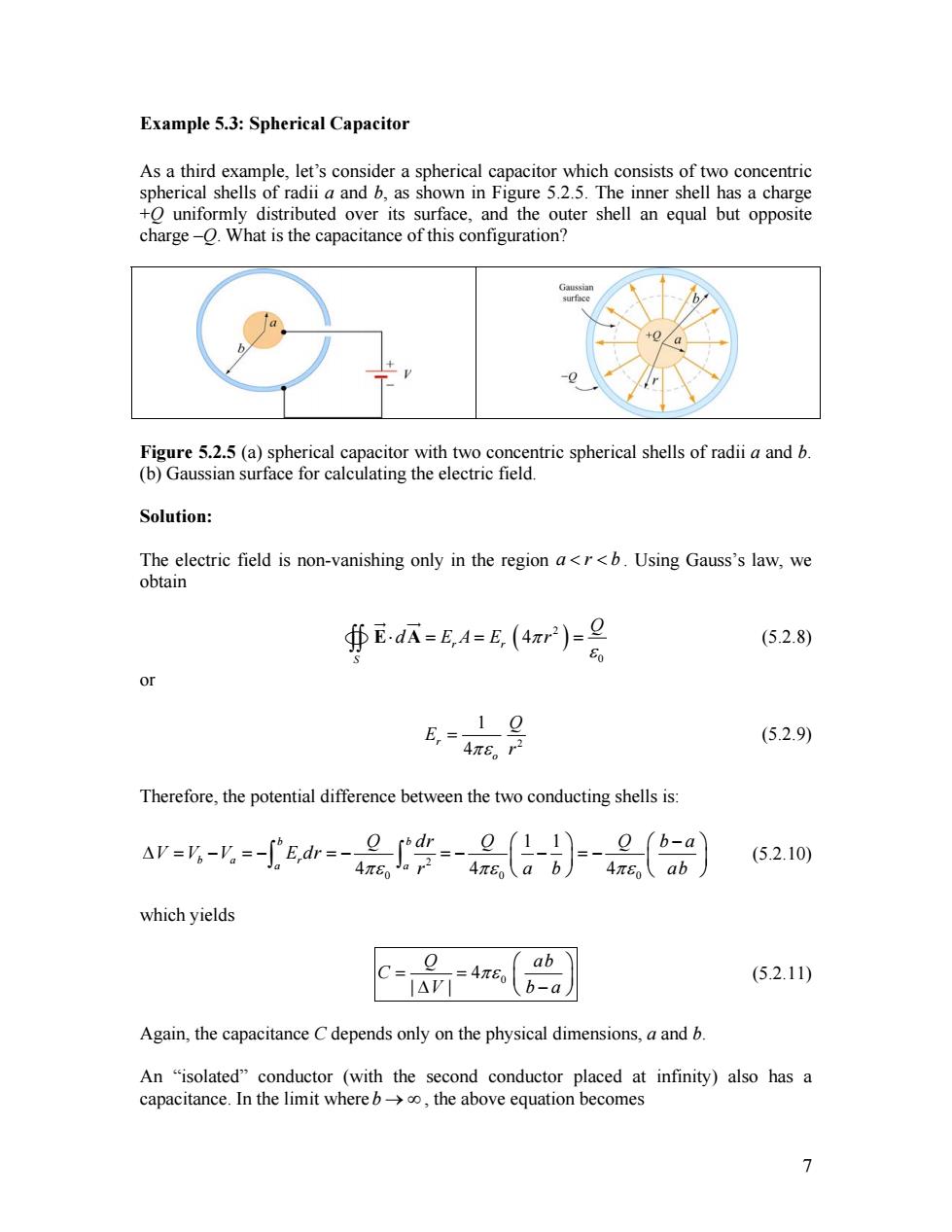正在加载图片...

Example 5.3:Spherical Capacitor As a third example,let's consider a spherical capacitor which consists of two concentric spherical shells of radii a and b,as shown in Figure 5.2.5.The inner shell has a charge +O uniformly distributed over its surface,and the outer shell an equal but opposite charge-O.What is the capacitance of this configuration? Gaussian surface Figure 5.2.5 (a)spherical capacitor with two concentric spherical shells of radii a and b. (b)Gaussian surface for calculating the electric field. Solution: The electric field is non-vanishing only in the region a<r<b.Using Gauss's law,we obtain ∯EdA=E4=E(4r)-号 (5.2.8) Or E,= 1 e (5.2.9) 4π8。r2 Therefore,the potential difference between the two conducting shells is: (5.2.10) which yields C= =4π0 ab (5.2.11) b-a Again,the capacitance C depends only on the physical dimensions,a and b. An "isolated"conductor (with the second conductor placed at infinity)also has a capacitance.In the limit where b->oo,the above equation becomes 7Example 5.3: Spherical Capacitor As a third example, let’s consider a spherical capacitor which consists of two concentric spherical shells of radii a and b, as shown in Figure 5.2.5. The inner shell has a charge +Q uniformly distributed over its surface, and the outer shell an equal but opposite charge –Q. What is the capacitance of this configuration? Figure 5.2.5 (a) spherical capacitor with two concentric spherical shells of radii a and b. (b) Gaussian surface for calculating the electric field. Solution: The electric field is non-vanishing only in the region a r < < b . Using Gauss’s law, we obtain ( ) 2 0 4 r r S Q d E A E π r ε ⋅ = = = ∫∫ E A JG JG w (5.2.8) or 2 1 4 r o Q E πε r = (5.2.9) Therefore, the potential difference between the two conducting shells is: 2 0 0 0 1 1 4 4 4 b b b a r a a Q dr Q Q b a V V V E dr πε r a πε b πε ⎛ ⎞ ⎛ − ∆ = − = − = − = − ⎜ ⎟ − = − ⎜ ⎝ ⎠ ⎝ ∫ ∫ ab ⎞ ⎟ ⎠ (5.2.10) which yields 0 4 | | Q C V b πε ⎛ = = ⎜ ∆ ⎝ ⎠ ab a ⎞ ⎟ − (5.2.11) Again, the capacitance C depends only on the physical dimensions, a and b. An “isolated” conductor (with the second conductor placed at infinity) also has a capacitance. In the limit whereb → ∞ , the above equation becomes 7